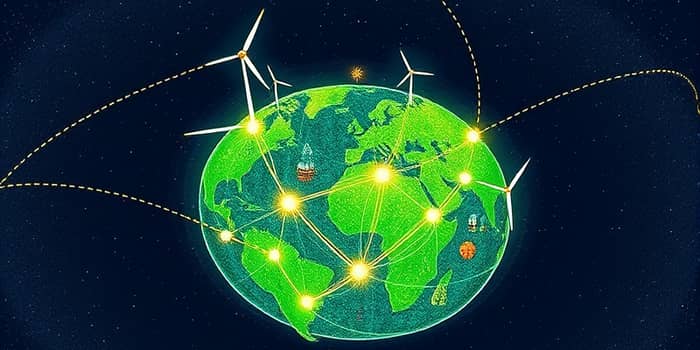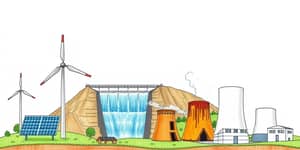In an age of mounting environmental and social challenges, blockchain technology has emerged as a beacon of hope for driving transparency, accountability, and innovation. By leveraging its unique characteristics, organizations around the world are pioneering new models for resource management, ethical trade, and climate action.
Understanding Blockchain’s Core Features
At its essence, blockchain is an immutable, distributed ledger that records transactions across decentralized networks of trust. Each block is cryptographically linked, ensuring an unprecedented transparency and immutability that cannot be altered without consensus.
This architecture underpins its value to environmental, social, and governance efforts by providing verifiable proof of every step in a process. From data integrity to shared governance, blockchain offers a foundational layer for robust data-driven sustainability interventions.
Transforming Supply Chains
One of the most compelling applications of blockchain is in supply chain verification. Traditional systems often obscure origin points, labor conditions, and material sourcing. Blockchain changes that by enabling real-time tracking and verifiable proof of claims.
- Fair trade coffee traced from farm to cup
- Ethical fashion verifying worker compensation
- Organic certification recorded at each step
- Recycled material content authenticated on a ledger
- Fish and seafood supply chains ensuring sustainable catch
By ensuring supply chain accountability and traceability, companies and consumers can make informed choices and hold stakeholders to higher sustainability standards.
Advancing Carbon Markets and Renewable Energy
Carbon markets have historically suffered from opacity and inefficiency, enabling fraud and double-counting of credits. Blockchain introduces a transparent registry for issuing, tracking, and retiring carbon credits, reducing corruption and empowering traders.
Meanwhile, blockchain-enabled platforms facilitate peer-to-peer energy trading where prosumers—those producing and consuming energy—can transact directly. Solar panel owners sell excess electricity to neighbors at dynamic rates, bypassing traditional utilities and fostering local green grids.
Enabling Circular Economy Models
The shift from a linear “take-make-waste” paradigm to a circular economy depends on visibility over material lifecycles. Blockchain underlies initiatives that track products from design through end-of-life, enabling repair, refurbishment, and recycling.
By scanning QR codes linked to a blockchain record, consumers and recyclers can verify the recycled content and proper disposal pathways for electronics, textiles, and plastics, minimizing waste and closing resource loops.
Driving Sustainable Finance and Natural Resource Management
Sustainable finance has grappled with greenwashing and misallocation of funds. Blockchain introduces green finance mechanisms with accountability, allowing investors to follow the flow of capital in real time and verify that projects deliver promised environmental outcomes.
Beyond finance, blockchain assists in stewarding natural assets such as water, forests, and minerals. Immutable records of land use, water rights, and pesticide application enable regulators and communities to enforce sustainable practices and combat illegal exploitation.
Challenges and Future Directions
No technology is without hurdles. Early blockchain platforms consumed vast amounts of electricity, drawing criticism for their environmental footprint. However, the field is rapidly transitioning to advanced energy-efficient consensus protocols like Proof of Stake and Proof of Authority, slashing energy use by orders of magnitude.
Moreover, blockchain alone cannot guarantee ethical outcomes. Its benefits materialize only when combined with strong governance, community engagement, and complementary technologies.
- Tokenization of environmental assets
- Zero-knowledge proofs for compliance validation
- Peer-to-peer solar energy marketplaces
These emerging innovations illustrate a pathway toward holistic, tech-driven solutions that amplify blockchain’s sustainability potential.
Quantitative Highlights
Key metrics provide perspective on blockchain’s evolving role in sustainability:
Contributing to Global Sustainability Goals
Blockchain’s capabilities align with multiple UN Sustainable Development Goals, elevating its relevance for policymakers and enterprises alike:
- Affordable and Clean Energy
- Responsible Consumption and Production
- Climate Action
- Life on Land (natural resource management)
- Partnerships for the Goals
Looking Ahead: A Sustainable Blockchain Ecosystem
As blockchain matures, interoperability between networks and integration with emerging technologies like AI and IoT will amplify its impact. Cross-sector partnerships will be critical to driving adoption and ensuring that implementations are equitable and inclusive.
By championing circular economy initiatives and innovation and embedding ethical frameworks in design, blockchain can transform the way humanity interacts with the planet and each other. With collaborative effort, this technology will not only record progress but become a catalyst for real-world change.
References
- https://www.unicefventurefund.org/story/blockchain-2025-beyond-transactions-building-resilient-systems-social-good
- https://www.fynd.academy/blog/features-of-blockchain-support-sustainability-efforts
- https://cardanofoundation.org/blog/blockchain-for-sustainability
- https://osl.com/academy/article/how-blockchain-technology-is-supporting-sustainable-finance-in-2025
- https://www.trigyn.com/insights/top-trends-blockchain-technology-2025
- https://webisoft.com/articles/blockchain-environmental-impact/
- https://www.computerscience.org/resources/blockchain-and-sustainability/
- https://community.nasscom.in/communities/blockchain/why-your-business-needs-blockchain-application-2025










